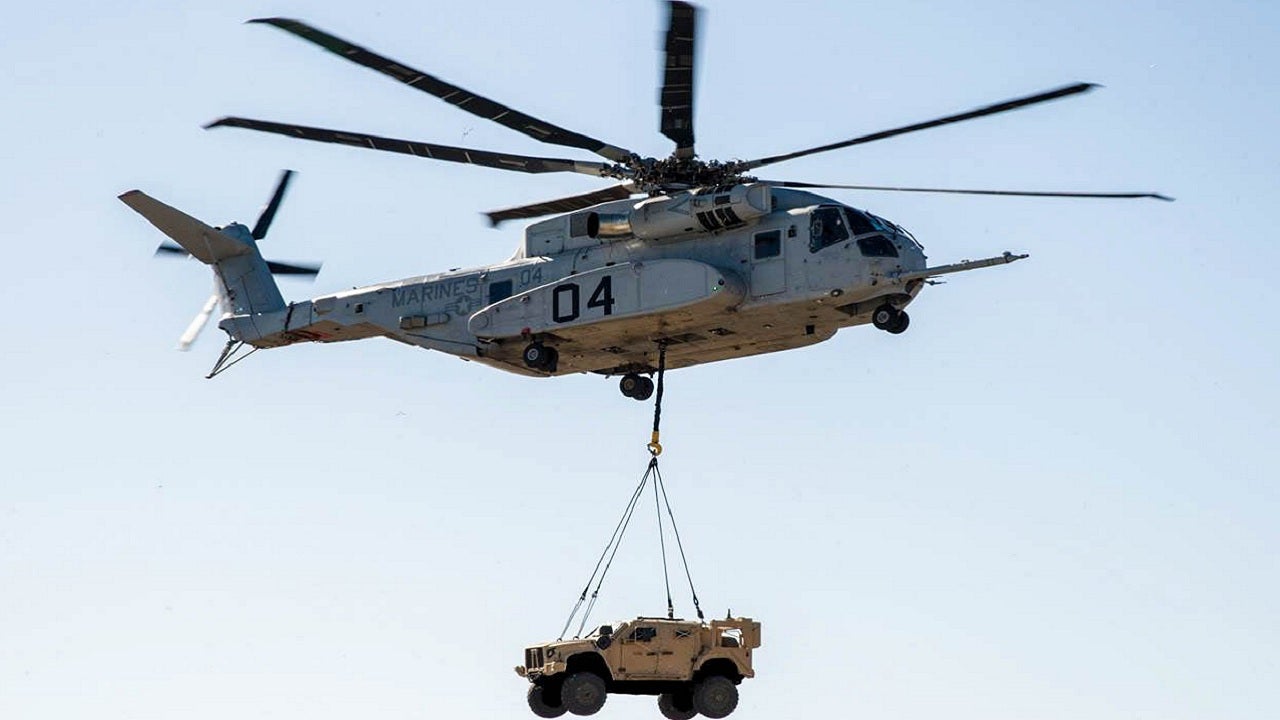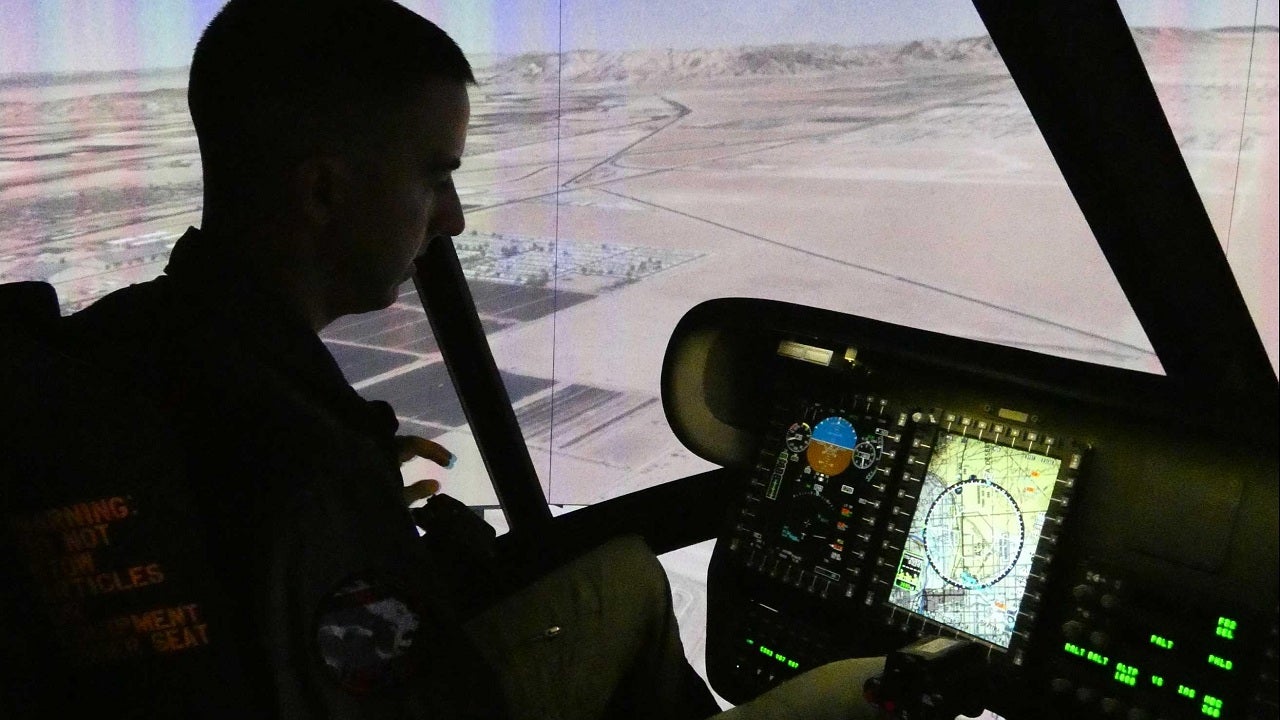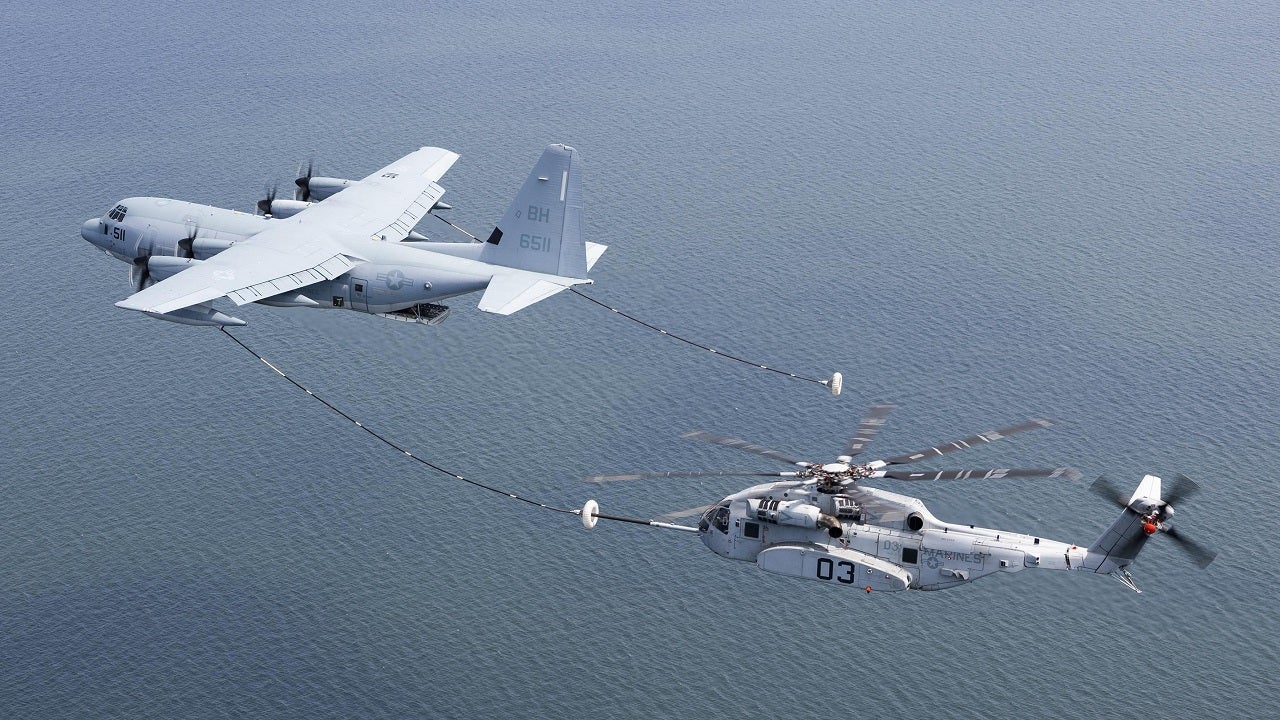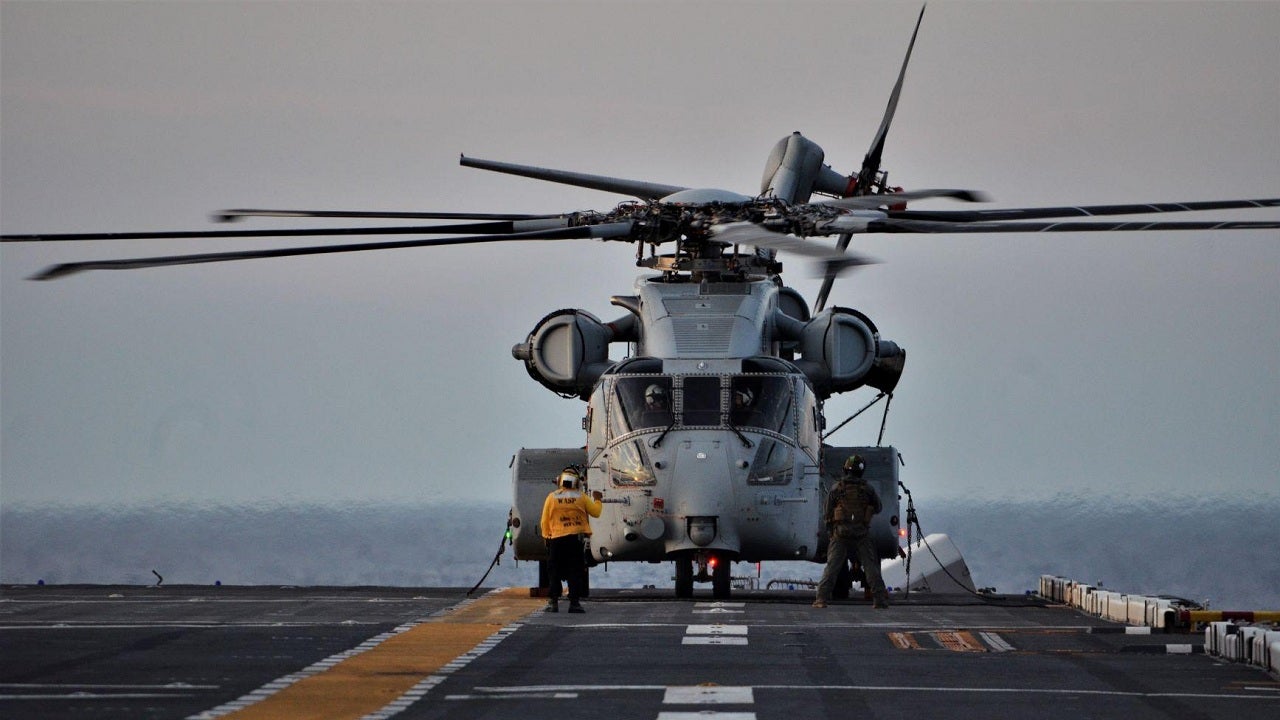CH-53K King Stallion is a next-generation heavy-lift cargo helicopter being manufactured by Sikorsky Aircraft, a Lockheed Martin company.
The rotorcraft is intended to replace the CH-53E helicopter of the US Marine Corps (USMC), which plans to procure 200 CH-53K helicopters.
The King Stallion helicopter made its first flight in October 2015, while the first CH-53K helicopter was delivered to the Marine Corps in May 2018.
Sikorsky received a $1.13bn contract from the US Naval Air Systems Command to provide 12 CH-53K King Stallion helicopters, as well as spares and logistical support in May 2019. Deliveries are expected to start in 2022.
CH-53K King Stallion development
Sikorsky built six CH-53K prototypes, including four engineering development models and two system development test article (SDTA) aircraft. The helicopters accumulated more than 1,600 flight test hours to date.
Spirit AeroSystems delivered the fifth CH-53K King Stallion SDTA helicopter fuselage in April 2018.
The first training device for the CH-53K helicopter was delivered to the H-53 Heavy Lift Helicopters programme office (PMA-261) in April 2020.
The CH-53K King Stallion aircraft demonstrated its aerial refuelling capabilities during an air-to-air refuelling test with a KC-130J aerial refuelling tanker in April 2020.
The rotorcraft completed a series of sea trials in the Atlantic Ocean in June 2020. The tests were conducted on the US Navy’s landing helicopter dock (LHD) amphibious assault ship, USS Wasp.
The initial operational test and evaluation are expected to commence in 2021, while the CH-53K fleet will be inducted into service between 2023 and 2024.
CH-53K King Stallion missions
The CH-53K heavy-lift helicopter is designed for expeditionary heavy-lift transport of armoured vehicles, equipment and personnel.
It will support a range of military missions, including humanitarian aid, troop and equipment / cargo transport, and casualty evacuation (CASEVAC).
The rotorcraft can perform missions in the modern battlefield and also support special operations forces, and combat search and rescue (CSAR) operations.
The helicopter will serve as critical land and sea-based logistics connector. It is the only sea-based, long-range, heavy-lift helicopter that will remain in production through 2032 and beyond.
Design and features of CH-53K King Stallion
The CH-53K helicopter’s design will have a smaller shipboard footprint, lower operating costs per unit, as well as less direct maintenance man-hours per flight hour when compared to CH-53E.
The helicopter has an overall length of 30.2m, fuselage width of 5.3m and height of 8.6m. It is capable of lifting approximately 14t at a mission radius of 203km in marine environments.
The rotorcraft is operated by two pilots and can be accompanied by a maximum of three aircrewmen based on the mission requirements.
It can be installed with a containerised flight training device (CFTD), which will offer realistic cockpit or system displays and can also simulate weather and tactical environment.
The CFTD also has the capability to connect it to other simulators to provide enhanced attitude control and other aircraft training scenarios. The powerful diagnostic functions will allow the monitoring of the helicopter’s performance and health, enabling maintainers to resolve issues before the mission.
CH-53K cockpit
A new digital glass cockpit on board the helicopter is designed to streamline and enhance the entire pilot-vehicle interface. The rotorcraft also features fly-by-wire (FBW) flight control system, which reduces pilot workload.
The helicopter integrates five multi-function displays (MFDs) and two control display units (CDUs). The cockpit field of view of the helicopter will be twice to that of CH-53E.
Cabin details
The cabin of CH-53K measures 9.1m long, 2.6m wide and 2m high. It can accommodate 34 crashworthy seats and 24 litters.
The cabin is 30cm wider than that of CH-53E helicopter, enabling the transportation of more troops with fewer trips. The helicopter can carry 463l pallets and high-mobility multi-purpose wheeled vehicles (HMMWVs) due to its large cabin.
The flexible configurations will offer maximum mission effectiveness while supporting loading / unloading of cargo without the need for reconfiguring and removing troop seating.
Engine and performance of CH-53K King Stallion
The helicopter will be powered by three General Electric T408 turboshaft engines with a rated power output of 7,332shp each. Each engine is controlled by a dual-redundant full authority digital engine control (FADEC) system.
The new engine offers 57% more power and consumes 18% less fuel at 7,378shp compared to the engines on board H-53E helicopter. It also features 63% fewer parts, ensuring easy maintenance.
The helicopter cruises at a speed of 315km/h, which enables it to offer quick response during critical situations and reduce the exposure of passengers and crew in hostile environments.
Contractors involved
GE Aviation won $143m contract from the US Naval Air Systems Command for building 22 engines for CH-53K helicopter in November 2017.
Spirit AeroSystems is responsible for supplying fuselage and performing the entire assembly of the cockpit and cabin for the CH-53K King Stallion.
The Protective Group received a contract to provide crew protection kit for the CH-53K helicopter in September 2018.
Lockheed Martin partnered with Veraxx for providing CFTD for the rotorcraft.







